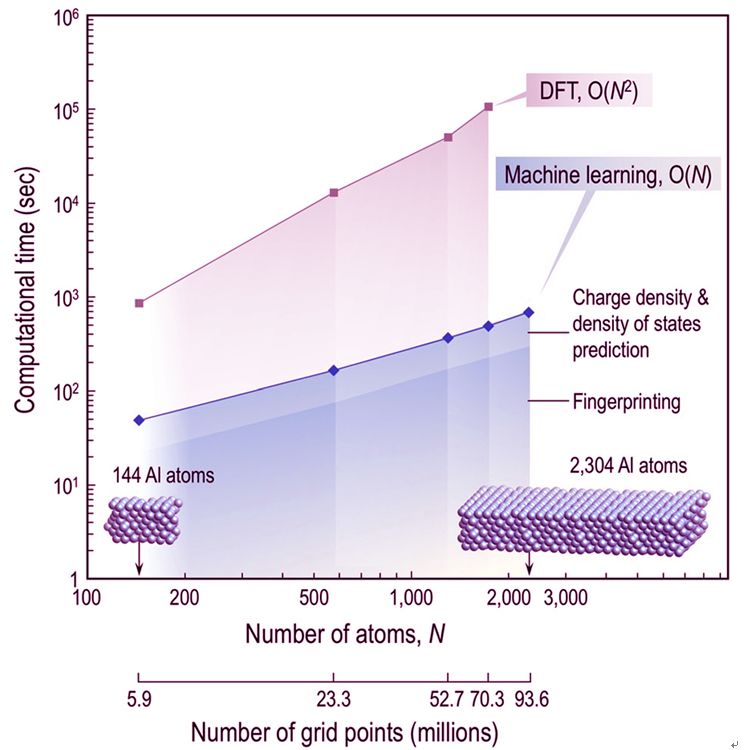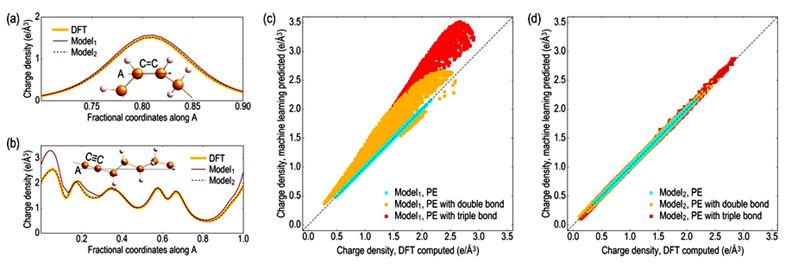npj: 机器学习—快速精确预测电子结构问题
海归学者发起的公益学术平台
分享信息,整合资源
交流学术,偶尔风月
基于求解密度泛函理论(DFT)Kohn-Sham(KS)方程的模拟,已成为现代材料学和化学研究和开发组合过程的重要组成部分。尽管KS方程具有很强的普适性,但由于求解计算量很大,常规DFT计算一般只限于几百个原子。
来自佐治亚理工学院的Rampi Ramprasad领导的团队,报道了一种基于机器学习的方法,可以不直接求解KS方程而有效预测电子结构。该方法利用新的旋转不变表示,将格点周围的原子环境映射到该格点处的电子密度和局部态密度,并使用预先计算得到的带有几百万的格点信息的DFT结果来训练的神经网络来获得该映射。上述方法可以精确模拟实际求解KS方程的结果,但是速度快几个数量级。此外,由于该方法的计算量与系统尺寸严格成线性关系,因而有望用于大型体系的电子结构预测。
该文近期发表于npj Computational Materials 5: 22 (2019),英文标题与摘要如下,点击左下角“阅读原文”可以自由获取论文PDF。
Solving the electronic structure problem with machine learning
Anand Chandrasekaran, Deepak Kamal, Rohit Batra, Chiho Kim, Lihua Chen & Rampi Ramprasad
Simulations based on solving the Kohn-Sham (KS) equation of density functional theory (DFT) have become a vital component of modern materials and chemical sciences research and development portfolios. Despite its versatility, routine DFT calculations are usually limited to a few hundred atoms due to the computational bottleneck posed by the KS equation. Here we introduce a machine-learning-based scheme to efficiently assimilate the function of the KS equation, and by-pass it to directly, rapidly, and accurately predict the electronic structure of a material or a molecule, given just its atomic configuration. A new rotationally invariant representation is utilized to map the atomic environment around a grid-point to the electron density and local density of states at that grid-point. This mapping is learned using a neural network trained on previously generated reference DFT results at millions of grid-points. The proposed paradigm allows for the high-fidelity emulation of KS DFT, but orders of magnitude faster than the direct solution. Moreover, the machine learning prediction scheme is strictly linear-scaling with system size.
扩展阅读
本文系网易新闻·网易号“各有态度”特色内容
媒体转载联系授权请看下方








